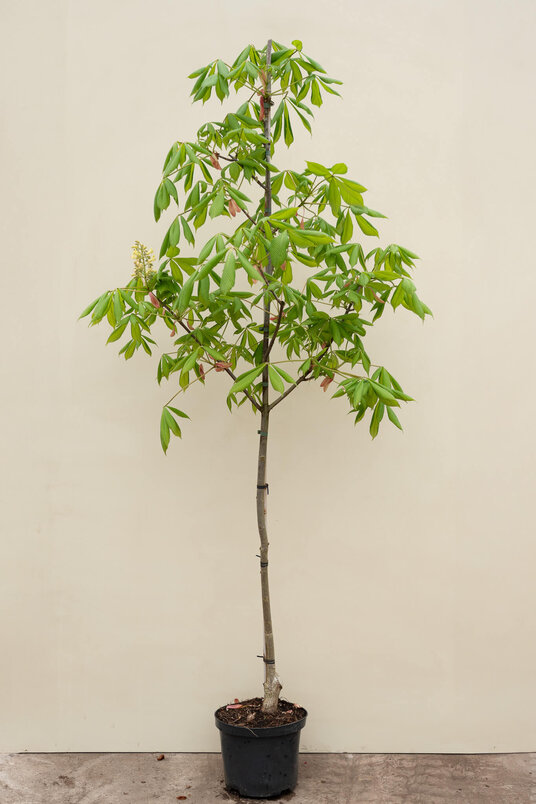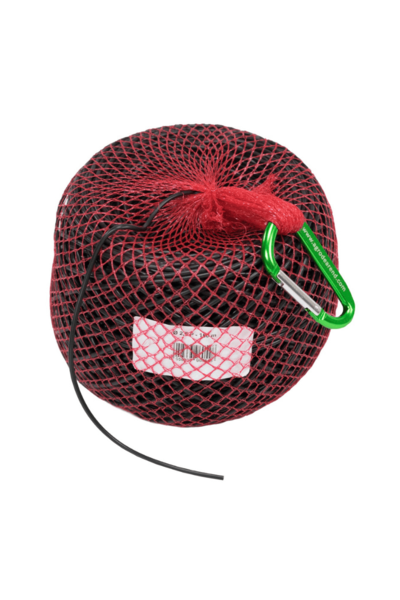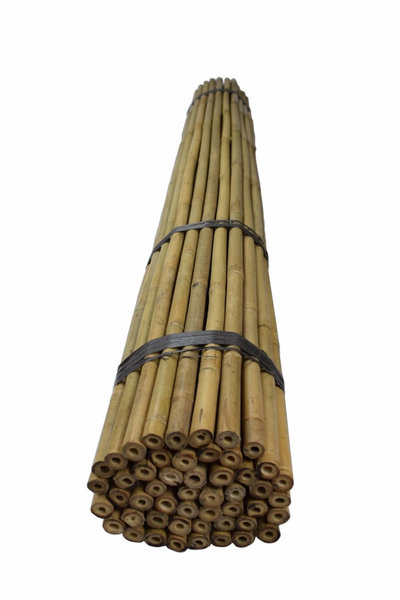Young Yellow Pavia tree | Aesculus flava 'Vestita'
Yellow with red-spotted flower clusters in spring and chestnut gathering in autumn? The Aesculus flava 'Vestita' offers you these possibilities.
Discount!
- Quantity Discount Per piece
- -10% €56,03 Incl. VAT
Guaranteed damage-free delivery
Free shipping from €150,- (International)
Can be planted throughout the year
Interesting Cultivar
The Aesculus flava 'Vestita,' also known as the Yellow Pavia, is a large tree that is not affected by chestnut blight or chestnut leaf miner. This makes the tree a very interesting cultivar.
Oval Crown
Characteristic of the Aesculus flava 'Vestita' is the broad, oval crown with widely spaced branches.
Leaf Color and Leaf Shape
The leaf of the Aesculus flava 'Vestita' is fresh green and consists of 5 to 7 leaf lobes. In spring, the leaf turns yellow-pink before acquiring the fresh green color. In autumn, the leaf changes to yellow-violet before falling off quite early, revealing the Aesculus flava 'Vestita's distinctive winter appearance.
Flowering
The Yellow Pavia blooms in spring with the distinctive flower clusters of a chestnut, which, in the case of the Aesculus flava 'Vestita,' are yellow with red coloring.
Fruits - Chestnuts
After flowering, the tree produces its characteristic fruits, also known as chestnuts, in the autumn.
Location
The Aesculus flava 'Vestita' thrives in almost any location, from sun to shade, as long as the tree has sufficient moisture. The tree can tolerate pavement and air pollution well, making it an excellent choice for urban areas.
How to plant the tree?
- Determine the final location of the tree and ensure it is free from cables, debris, old plants, and other obstacles that may hinder the tree's growth.
- Dig a planting hole that is twice the width of the root ball. Loosen the soil at the bottom of the planting hole and mix the excavated soil with (organic) garden soil or planting substrate.
- Adjust the planting hole to the height where the root ball fits and firmly press the soil.
- Fill the planting hole with water and wait for it to settle. Check if the root ball is sufficiently moist.
- Place the tree or plant in the planting hole. It is extremely important that the tree is not planted too deep, as this can cause root rot.
- Insert a tree stake or bamboo stake firmly into the ground on the side of the tree where the most wind comes from.
- Now, place the watering ring or create a mound of soil around the tree so that water can seep into the ground.
Why Choose a Young Tree from Amitis
- Easy to plant yourself due to the compact size and light weight
- Conveniently delivered to your home in a sturdy packaging
- Experience the growth and development of your own tree
- Easy to maintain
- Cultivate the size and growth form you are looking for
- Attain mature size within a short time
- Can be planted year-round as everything is delivered in pots
- No root loss and better chances of establishment as everything is pot-grown
- Cost-effective purchase
- Fresh, healthy plants directly from the grower
Questions?
Want to know more about pruning? Read our page on tree maintenance! Feel free to contact us; we are happy to assist!
Specifications
-
Light requirement
Sun semi-shade -
Fruits
Prominent brown fruits -
Evergreen
Not evergreen -
Winter hardiness
Winterhardy -
Leaf color in summer
Green -
Leaf color in autumn
Yellow -
Kind of tree
Free-growing tree, Fruit-bearing tree, Flowering tree, Trees with beautiful autumn color -
Location
Small garden, In pot on balcony or terrace, Large garden or park, In a row or avenue, Lots of sun, Partial shade -
Tree maintenance
Medium maintenance -
Flowering months
May -
Flower color
Yellow
Reviews(2)
- Add your review
-
-
-
"Goede prijs kwaliteit verhouding"
-
- Van Zetten
-
-
-
-
"Goede kwaliteit en snelle levering"
-
- Nelleke Bijl
-



















